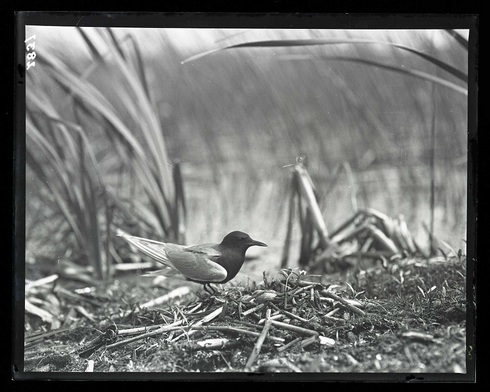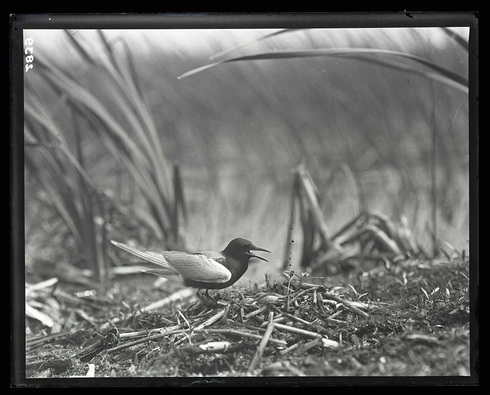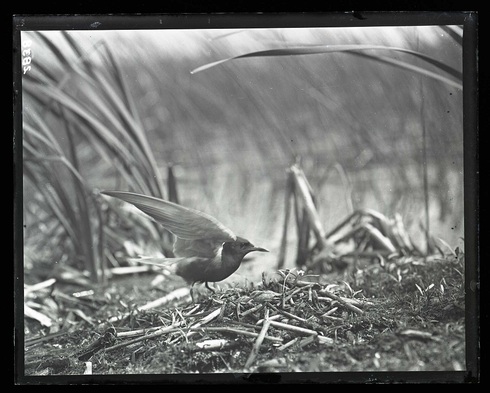I’ve been watching a lot of slow motion instant replays recently as a result of being an avid watcher of the coverage of the 2014 Winter Olympic Games in Sochi, Russia. Did the snowboarder/skier get enough rotation in their jump? Were the ice dancers completely in sync when performing their twizzles? With slow motion instant reply, judges can review technical difficulty more accurately to determine scores, and commentators have a tool with which to fill broadcast time and add suspense while waiting for the judges to announce said scores.
By capturing movement in still sequential snapshots, we can study the behavior of all animals more closely. Hundreds of images from the glass plate negatives in the Bell Museum records capture animals in motion. These images were taken during field excursions and served as research for the museum taxidermists who mounted specimens to be displayed in animal habitat groups. If a particular display was to portray a Black Tern in flight, the taxidermist would need to know the natural extension of the wings of that species if they wanted to achieve an accurate and lifelike depiction of the bird.
“The North American marsh dweller is ready…”

And a squawk from the Black Tern at the end of his attempt…

“The scores are in… 8.3. It won’t be enough for the podium.
Tough day for this eater of both insects and fish. The Black Tern will get another chance at a medal in the aerial dive competition, which is his best event.”
